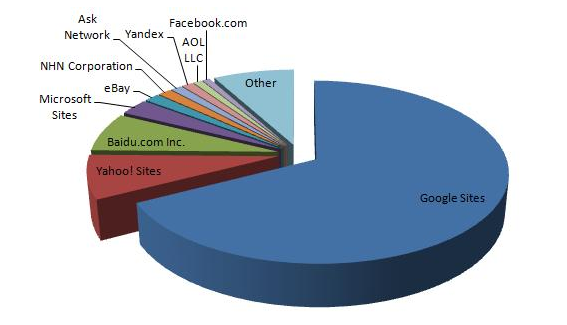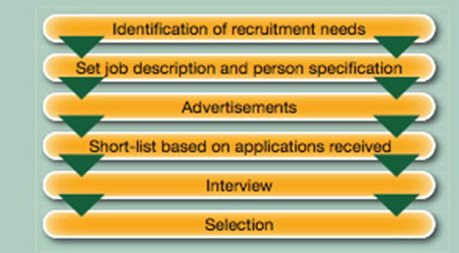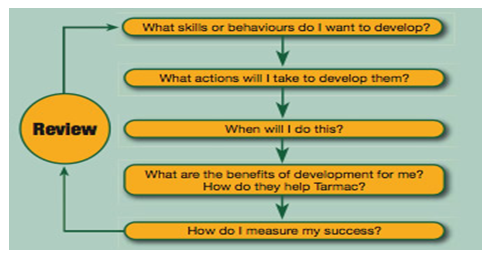Executive summary
This paper analyses the human resource department at Tarmac Group Limited. The analysis focuses on Tarmac’s strategic human resource management approach, and notes that the company has lived up to the theoretical conceptualizations of effective SHRM.
The paper notes that SHRM includes hiring the right employees, planning, forecasting HR needs, arranging for training and development programs, and managing recruitment and selection processes. Further, the paper notes that Tarmac links its human resources to the company’s objectives through several strategies. Such include hiring the right employees and enhancing their performance by enrolling them in training programs.
The paper identifies Tarmac’s mission and vision and indicates how HR has been strategically used to ensure that the mission and vision are attained. The paper also notes that the company uses different methods to attract, recruit, and select the right talent based on current and future HR needs.
Advertising job vacancies in relevant publications and on the company’s website are some of the dominant ways through which Tarmac attracts qualified employees. Employee retention at Tarmac is done through a combination of good employee relations, motivation, and activities that bolster their satisfaction in the job.
As Part of SHRM, Tarmac engages in performance management. Additionally, the leadership approach at Tarmac has a positive impact on employees’ job satisfaction. Moreover, the culture at Tarmac is developmental since it revolves around developing employees and the company. The paper argues that major transitions at Tarmac were inspired by the need to remain competitive. The paper concludes by noting that Tarmac has linked its different HRM processes with its vision. The paper thus indicates that the company has successfully implemented SHRM.
Introduction
This paper provides a human resource department analysis of Tarmac Group Limited (hereunder Tarmac). Tarmac is rated as the largest supplier of construction materials in the United Kingdom. Since 2013, the company has been operating as Lafarge Tarmac.
This analysis will, however, concentrate on the human resource management practices at Tarmac up until 2013 mainly because of the availability of information about the company. The analysis will focus on Tarmac’s strategic HR approach, and notes that the company has lived up to the theoretical conceptualizations of effective SHRM.
SHRM at Tarmac
As a leading supplier of building products and quarry materials in the UK, Tarmac realized early enough that the success of its business depended on hiring people who had the right skills for the job (The Times 100 145). Tarmac has a core belief that indicates that “people make the difference and enable the business to be the leader in its chosen markets” (The Times 100 145).
Additionally, it recognizes the HR function as one of the key areas that supports operations in the company. In Tarmac, HR’s roles include planning staff requirements, forecasting HR needs, and managing the recruitment and selection processes (The Times 100 145). Additionally, once people are hired, the HR department ensures that they enrol in professional development programs that include training and participating in team building efforts (The Times 100 145).
A strategic approach to HRM refers to “a managerial process requiring human resource policies and practices to be linked with the strategic objectives of the organization” (Bratton and Gold 38). At Tarmac, the strategic approach to HRM is evident in the manner that the organization links its human resources to the company’s main objective.
The objective is identified as delivering “the highest value from our resources for our customers, communities, employees and investors” (Business Case Studies 1). Linking its human resource to the foregoing objective has led Tarmac to adopt several measures that include hiring specialist employees to handle different roles in the company.
Such include marketers, customer service representatives, information technology specialists, financial accountants and management accountants. Tarmac also creates programs that enhance employees’ capabilities (e.g. through engaging, developing and motivating employees) (Business Case Studies 1).
Tarmac’s vision and mission
Tarmac indicates its vision as ‘achieving the exception’. To link its human resource to the foregoing vision, the company created a plan through which employees could make different contributions to the company. The plan is indicated in figure 1 below. As indicated in the plan, employees are engaged in everything, including managing assets, reducing costs, developing markets, working as a team, and acting responsibly to ensure safe and sustainable business practices.

Development and learning opportunities
To contribute to the larger organizational vision, Tarmac understands the role of development and learning for its human resource. It is noted that the company has a motivational approach that makes all objectives simple and clear so that they are easily understood by the employees (Business Case Studies 2). Additionally, Tarmac has training programs that help employees acquire new skills and improve on existing skills.
The foregoing is done with the intention of helping employees perform their duties more effectively. Lastly, Tarmac recognizes and rewards employees for their performances (Business Case Studies 2). The development and learning opportunities in Tarmac can therefore include training opportunities and performance measurement programs that recognize well-performing employees.
Tarmac’s approach to resourcing
Tarmac approach to resourcing its HR is pegged on the organization’s larger need to plan its workforce for current and future needs (Business Case Studies 4). The company thus starts by identifying employment needs (see figure 2 below), and then sets in place strategies for attracting, recruiting and selecting the right talent.

Advertising employment opportunities at Tarmac
As evident from figure 2 above, Tarmac advertises employment opportunities after providing a job description and specifying the kind of people and the skills most suited for the jobs. It has been noted that the main channels of advertising used by Tarmac include relevant publications mainly in the construction industry. Such include the Construction Weekly Journal (Business Case Studies 4).
Another advertising avenue for Tarmac is its website. The choice of advertising medium is made because they target people who have specific interest in the construction industry. The construction weekly is, for example a journal that appeals to an audience that is interested in what is happening in the construction industry.
More general employment opportunities are advertised in magazines such as ‘Personnel Today’ (Business Case Studies 1). The foregoing is because Tarmac also targets people who may not have an interest in the construction industry, but whose skills and expertise may be valuable for the company’s back office operations.
Performance management at Tarmac
Tarmac encourages all its employees to embrace a personal development plan as indicated in figure 3 below.

The last step in the development plan seeks to determine how an employee measures their success. From figure 3 above, it is evident that employees need to pursue skills and/or behaviours that not only benefit their development, but also help Tarmac in attaining its business objectives.
Employees’ personal initiative notwithstanding, Tarmac (and especially in its current state as Lafarge Tarmac) has taken performance management a step further by contracting an independent company named Investors in People (IIP) to review its performance (Lafarge Tarmac Contracting 1-2). IIP’s mandate is to review employees’ performance, improve employee engagement and recommend management and leadership approaches that are more suitable in motivating employees to be better performers in their respective jobs.
HR leadership style at Tarmac
At Tarmac, managers have a responsibility to set up organizational development teams, which promote learning and development in the company. The foregoing is done through coordinating training programs and fostering a culture where employees are aware of the need to improve themselves perpetually (The Times 100 147).
As leaders, managers have to agree (in consultation with employees) on a set of key performance indicators for use in relation to identified targets (The Times 100 147). It is the managers’ role to help employees meet set KPIs, through identifying and setting priorities, coaching and leading employees, encouraging new ideas and actions of employees, and emphasizing the need to use skills and capabilities that employees possess to attain set targets (The Times 100 148). The leadership approach that is used in Tarmac is cited as having a positive impact on employees’ job satisfaction.
Specifically, the leadership approach shows appreciation to employees’ contribution to the company. At the same time, the HR manager has a role of leading the business managers in the company in the application of human resource policies (The Times 100 148).
The foregoing not only helps in attaining consistency in Tarmac’s HR processes, but also enhances the development of partnerships across business teams in the organization. Effectively, such partnerships ensure that all teams work towards the attainment of the company’s vision and objectives.
The culture at Tarmac
The culture at Tarmac can be defined as developmental since it revolves around a specific focus which is identified as “setting clear objectives, employee development, and recognition and award” (Truss, Mankin and Kelliher 89). The foregoing focus has led to a culture of trust and teamwork, since managers and employees work together to ensure that objectives are clearly understood and that the right processes are adopted in order to attain those objectives. Additionally, employees have learnt to trust that Tarmac wants the best for them (at least career wise) through the learning-oriented culture that emphasizes the need for training and retraining.
Recognition and reward is an approach that is further used to enhance the trusting relationship that exists between Tarmac and its employees (Business Case Studies 4). On one hand, Tarmac trusts that employees who are recognized and rewarded for their input in the company will stay longer in their jobs. On the other hand, the recognition and rewards makes employees more satisfied in their jobs and as such, they stay longer.
Major transitions at Tarmac
Since its establishment in 1903, Tarmac has no doubt gone through many changes. In the last decade, however, the company made major transitions in ownership, when it was first sold to Anglo American, and later when it got into a joint venture with Lafarge. In 2010, the company underwent restructuring which was intended to make it more responsive to prevailing market needs, and also got a new chief executive officer (Tarmac 1).
The change in ownership and leadership marked a major transition in Tarmac, and understandably, employees needed assurance that their jobs would be stable and/or even better. Among the strategies that the HR department at Tarmac adopted in order to get through the transition included building engagement with employees, and sustaining “employee motivation and morale at a time of change” (Tarmac 1).
In order to uphold the team culture that was dominant in the organisation, the company contracted an external consultant who helped with team management and development. In the end, the teams and individual employees sailed through the transition successfully. Although it is hard to pinpoint what triggered the transition, getting ready for a more competitive market is one possible reason why Tarmac got into a joint venture with Lafarge, got a new CEO and even restructured its operations.
Change implementation at Tarmac
From the start, Tarmac had realized that if successful change was to occur, employees needed to be consulted, and made to agree with the goals intended to be attained during and after the changes (Tarmac 3). The foregoing would take leadership, which Tarmac offered through properly coordinating the employees.
The implementation of change is therefore indicated as starting with proper coordination within Tarmac’s management. Next, employees were made to understand the goals of change. The foregoing was done in order to attain their support (or buy-in) during the change process. Next, managers ensured that changes were reflected in work teams, which had to conform to new strategies.
Finally, the company adopted methods of measuring progress in different functional and operating areas. For example, employees would be asked to indicate who their new CEO was and what his vision for the company was. Ideally, the vision of the company had not changed when the new CEO took over leadership. The foregoing strategy was meant to ensure that employees remain aware that the change in leadership did not translate into any changes in what the organization wanted to achieve in the market.
Working environment offered by Tarmac
Tarmac arguably offers a supportive working environment, which is characterized by training and development programs as well activities meant to boost the morale of employees. Something worth noting is that the company offers its employees training on safety (Tarmac 3), and this can be interpreted to mean that the company does indeed care about the welfare of its workforce.
Employee feedback is also another strategy that the company uses to gauge its working environment by allowing employees to voice their opinions on matters that are of interest to them and the company (Tarmac 3). Working in teams has also enhanced the supportive work environment, since issues are dealt with in groups, and with the leadership that is offered by team leaders. In cases where a problem proves too hard to handle in a group setting, it is escalated to the department manager, who then provides direction on how best to handle the issue.
Discussion
The analysis above indicates the different aspects of the strategic human resource management approach adopted by Tarmac. As noted in the introductory part of this paper, SHRM requires an organization to link and /or align its HR practices and policies to organizational objectives.
At Tarmac, such linking has been done through ensuring that all departmental managers understand the HRM policies and procedures, and that they implement them in a manner that ensures that they contribute to the overall organizational vision of ‘achieving the exception’.
Achieving the exception is a blanket term that indicates Tarmac’s mission not only to become a market leader, but also be a company that satisfies all its stakeholders. The stakeholders include its employees, shareholders, customers, and the general public, especially those who use facilities constructed using the inputs obtained from Tarmac (Tarmac 2).
Tarmac has also linked its HRM policies and procedures with its vision by ensuring that employees remain focused on what the larger organizational vision is. By so doing, employees always gauge their contribution to the organization based on the impact they have towards the realisation of the overall organisational vision.
Arguably, it is possible that activities that do not contribute to Tarmac’s intention to be a market leader in its provision of satisfactory products and services to its customers are discarded. Activities that do not enhance shareholder value are also discarded, while policies and procedures that are not employee-friendly are also dismissed.
Conclusion
Strategic human resource management intends to link the HRM aspect of a firm with its larger vision and objectives. In the analysis above, Tarmac is seen to have linked its different HRM processes with its vision. It must however be underscored that the analysis herein is based on publicly accessible information regarding the company.
The foregoing notwithstanding, Tarmac can be regarded as a firm that has successfully implemented SHRM, and perhaps that explains why the company was regarded as the leading supplier of construction materials in the UK prior to its merger with Lafarge.
Works Cited
Bratton, John and Jeff Gold. Human Resource Management: Theory and Practice. Basingstoke: Palgrave Macmillan, 2007. Print.
Business Case Studies. Developing a Human Resource Strategy: a Tarmac Case Study. n.d. Web.
Lafarge Tarmac Contracting. IIP is a Key Way to Achieve Feedback on Organisational Effectiveness. 2014. Web.
Tarmac. Concrete Results. 2012. Web.
The Times 100. “Tarmac – How Roles and Functions Contribute to Organisational Performance.” The Times Newspaper Limited. 2009. Web.
Truss, Catherine, David Mankin and Clare Kelliher. Strategic Human Resource Management. Oxford: Oxford University Press, 2012. Print.